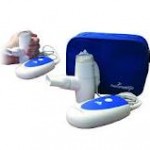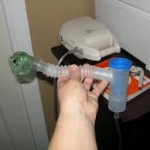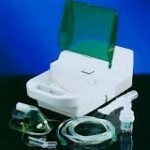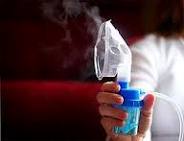For years, difficulty in breathing caused by constricted air passages has been managed and treated by the use of the nebulizer. As you know, a nebulizer is a device that converts the liquid medicine into mist or aerosol form. The vapors are then inhaled by the patient through a mask or a mouthpiece so the medication will be delivered directly to the lungs. It is a device that is often seen in emergency rooms and emergency vehicles so that the healthcare practitioners would be able to dilate the air passages of the patient that cannot breathe ideally. It is one of the priorities in rescuing a life. Breathing should be stabilized and helped so that the oxygenation of the brain and the rest of the body will continue as the heart pumps blood.
If you want to have smooth nebulizer treatments, you should care for your nebulizer properly. Remember that you should clean and disinfect in a smoke-free and dust-free area and away from open doors and windows. Use warm water when you wash the nebulizer cup and air dry it. No need to clean the air compressor tubing. Don’t use the dishwasher to clean the parts of your nebulizer. Disinfect every three days using the recommended disinfectant from your supplier or just water and vinegar (1 ½ cups water with ½ cup vinegar; 30-minute soak; rinse with running water; shake off excess water; air dry before storing).
As for your compressor, cover it with cloth when you don’t use it. Just wipe it clean with a damp cloth. Store the compressor in an elevated place and not on the floor. Check the filter regularly and clean as directed. Replace the filter when needed. Never forget to keep an extra mask or mouthpiece. Check the nebulizer medications often and store them in a dry, cool place.
When you finally have everything ready, including your nebulizer medications, then you are all set to do nebulizer treatments. The following are the proper steps in taking nebulizer treatments:
1. Preparation
 Make sure that you place the air compressor on a stable, flat surface. Plug it in the outlet. You should wash your hands, following the aseptic technique. Use warm water and soap. Use a dry, clean towel to wipe your hands with.
Make sure that you place the air compressor on a stable, flat surface. Plug it in the outlet. You should wash your hands, following the aseptic technique. Use warm water and soap. Use a dry, clean towel to wipe your hands with.
2. Medicine
 An important part of nebulizer treatments is to carefully prepare the medications that you have to use. Measure the medications carefully using a separate device such as a syringe, if the medication doesn’t come in a ready, disposable vial. Make sure that you read the labels carefully. Uncap the nebulizer cup and place the medicine in there. Reattach the top of the nebulizer cup.
An important part of nebulizer treatments is to carefully prepare the medications that you have to use. Measure the medications carefully using a separate device such as a syringe, if the medication doesn’t come in a ready, disposable vial. Make sure that you read the labels carefully. Uncap the nebulizer cup and place the medicine in there. Reattach the top of the nebulizer cup.
3. Start
 Next in the steps for nebulizer treatments is to attach the mask or mouthpiece to the nebulizer cup. Attach the tubing to it and to the aerosol compressor. Mist should be coming from the back of the mouthpiece once the compressor is on. You should sit on a comfortable chair, preferable with arm and back rest. If you prefer a mouthpiece, it should be between your upper and lower incisors and then sealed with your upper and lower lips. If you want a mask, then it should be fitted on your face comfortably.
Next in the steps for nebulizer treatments is to attach the mask or mouthpiece to the nebulizer cup. Attach the tubing to it and to the aerosol compressor. Mist should be coming from the back of the mouthpiece once the compressor is on. You should sit on a comfortable chair, preferable with arm and back rest. If you prefer a mouthpiece, it should be between your upper and lower incisors and then sealed with your upper and lower lips. If you want a mask, then it should be fitted on your face comfortably.
4. Treatment proper
 Slow deep breaths in the key to  very effective nebulizer treatments. You could try and hold your breath to let the medication really stay and reach your lungs. You have to do the nebulizer treatments for seven to ten minutes. Immediately stop the nebulizer treatments if you start getting dizzy and rest for about five minutes. Continue with the treatments but breathe a bit slower than your first try. Inform your doctor if this happens again.
Slow deep breaths in the key to  very effective nebulizer treatments. You could try and hold your breath to let the medication really stay and reach your lungs. You have to do the nebulizer treatments for seven to ten minutes. Immediately stop the nebulizer treatments if you start getting dizzy and rest for about five minutes. Continue with the treatments but breathe a bit slower than your first try. Inform your doctor if this happens again.
5. End
 You can then turn off the compressor after taking nebulizer treatments. Breathe a few times and then cough to clear the secretions left in your lungs. Cough into a tissue for the proper disposal of the secretions. Wash and dry your hands properly, then unplug the compressor before you clean it again.
You can then turn off the compressor after taking nebulizer treatments. Breathe a few times and then cough to clear the secretions left in your lungs. Cough into a tissue for the proper disposal of the secretions. Wash and dry your hands properly, then unplug the compressor before you clean it again.
Nebulizer treatments have long benefited many patients. Before, you couldn’t have your nebulizer treatments as you travel but because of modern technology, there are already portable nebulizers that are battery-operated that you can use anywhere, anytime. It is said that the nebulizer medications have certain side effects such as palpitations, anxiety, jitters, and irritations (throat, nose, and mouth). But you don’t have to worry because these are pretty rare to manifest. Always update your doctor about anything that you may consider unexpected in your nebulizer treatments. This is to make sure that you really benefit from the nebulizer medications and improve your state of health.
